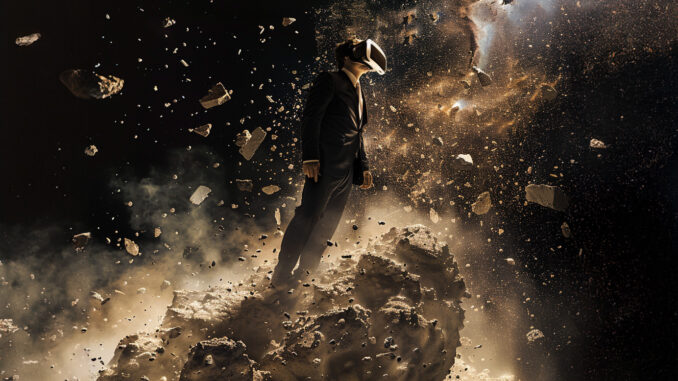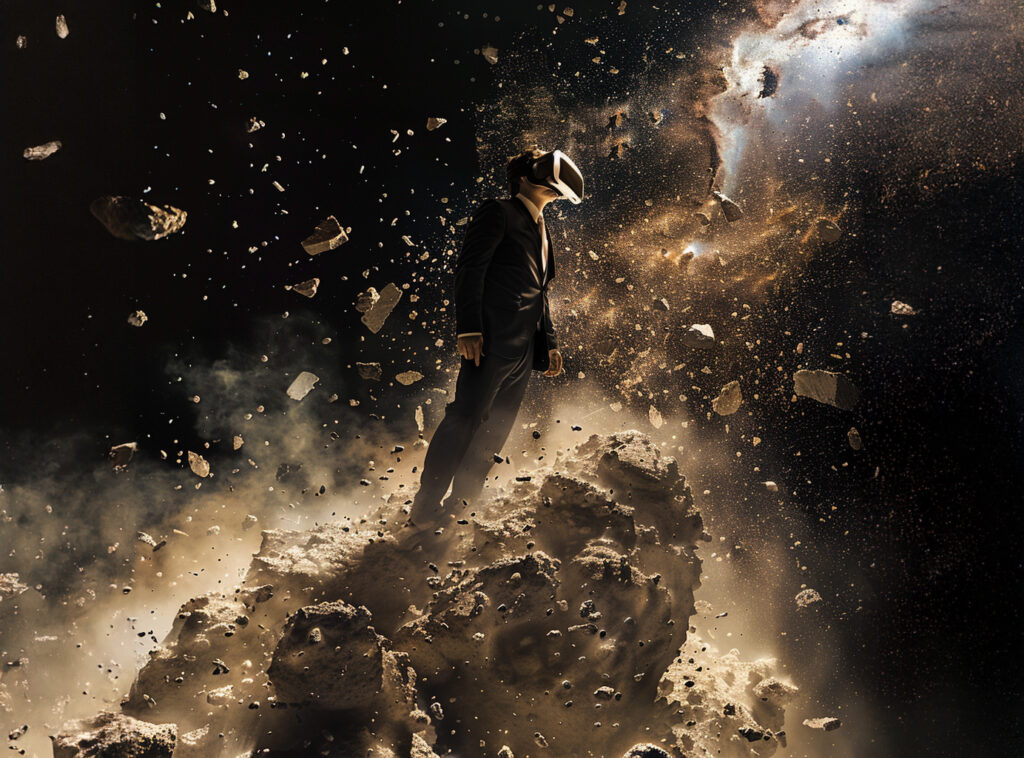
Discover how virtual reality can be used to visit asteroids such as Ryugu, offering immersive experiences for scientists and space enthusiasts.
Virtual reality (VR) is being used to recreate inaccessible space environments, such as the asteroid Ryugu visited by JAXA’s Hayabusa2 probe. At the annual meeting of the Astronomical Society of Australia in 2024, participants were able to explore Ryugu virtually, thanks to a 3D reconstruction. This technology enables deep immersion, helping to visualise and understand distant places with scientific precision.
Virtual reality and space exploration
Virtual reality (VR) is revolutionising the way we explore and understand space. Using immersive digital environments, VR allows researchers and space enthusiasts to visit inaccessible worlds, such as the asteroid Ryugu. This technology is transforming the way we interact with scientific data, offering a new and captivating perspective.
At the Astronomical Society of Australia’s annual meeting in June 2024, a VR experience was set up, allowing attendees to ‘visit’ Ryugu. The meeting, which was mainly virtual this year, used the Spatial platform to create a digital conference venue with exhibition halls, meeting rooms and an amphitheatre. The initiative, developed by The Future of Meetings, aimed to make meetings more sustainable and accessible.
The technology behind the VR experience
Ryugu’s VR experience was created by OmniScope, a start-up founded by astronomer Sasha Kaurov. Using real images captured by JAXA’s Hayabusa2 probe, OmniScope reconstructed the terrain surrounding the probe’s landing zone on Ryugu. Although the model is not a perfect replica, it offers a faithful representation of the environment, enabling near-real immersion.
Elizabeth Tasker, a professor at JAXA and member of the agency’s outreach team, pointed out that while the topology of Ryugu is not perfectly to scale, the models of the Hayabusa2 probe and its modules are faithfully reproduced. This accuracy is essential to provide an accurate educational and immersive experience.

The educational and scientific impact of VR
The ability to virtually stand on the surface of an asteroid creates a unique emotional and cognitive connection. As an educational tool, VR allows complex concepts to be visualised in a tangible way. At the meeting, Elizabeth Tasker led a guided tour of the virtual exhibition, explaining specific details of the Hayabusa2 probe. This interactive approach is much more engaging than a simple PowerPoint presentation.
For example, Tasker showed where the probe’s target markers and small impactors were stored. These details, difficult to grasp in two dimensions, become clear and understandable in 3D. In this way, VR makes it possible to ‘see’ the complex mechanisms and appreciate the technical challenges of space exploration.
Limits and potential of the VR experience
Despite its advantages, Ryugu’s VR experience has certain limitations. The recreated surface of the asteroid is not complete, making it impossible to walk from one side to the other. Elizabeth Tasker even warned participants that it was possible to ‘fall’ out of the asteroid due to the low gravity. However, this virtual fall ends with a reappearance on the surface of the asteroid, making the experience harmless.
These limitations in no way detract from the overall impact of the experiment. The ability to stand on an asteroid, even virtually, offers a unique perspective on the challenges of landing and exploring small celestial bodies millions of kilometres from Earth. This immersion helps to strengthen understanding and appreciation of planetary science.
Consequences and future prospects
The use of VR for space exploration opens up new prospects for education and research. By enabling scientists and the general public to explore inaccessible environments virtually, VR is helping to democratise access to knowledge and stimulate interest in space science. Future applications of this technology could include virtual tours of Mars, the Moon and other celestial objects, using data collected by real space missions.
Virtual reality is a powerful tool for space exploration and science education. Ryugu’s experience at the Astronomical Society of Australia meeting demonstrates the potential of this technology to offer new and engaging perspectives, transforming the way we understand and explore the universe.
War Wings Daily is an independant magazine.